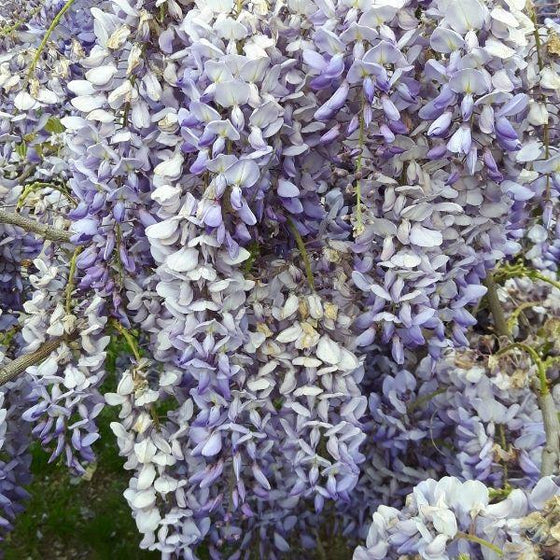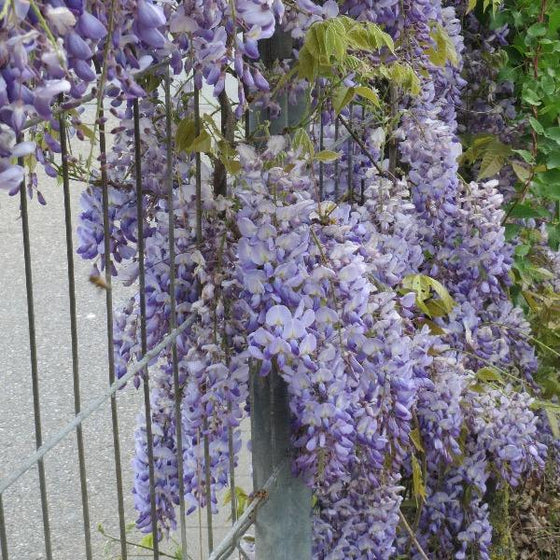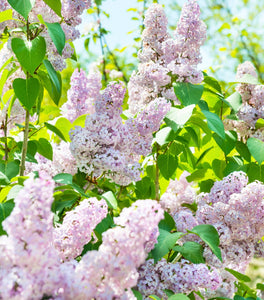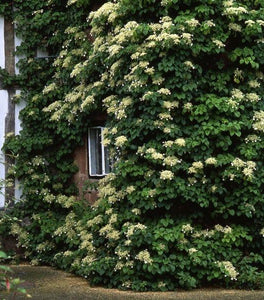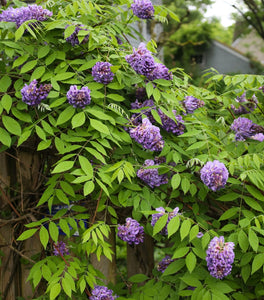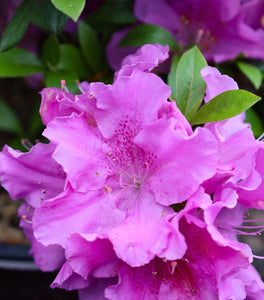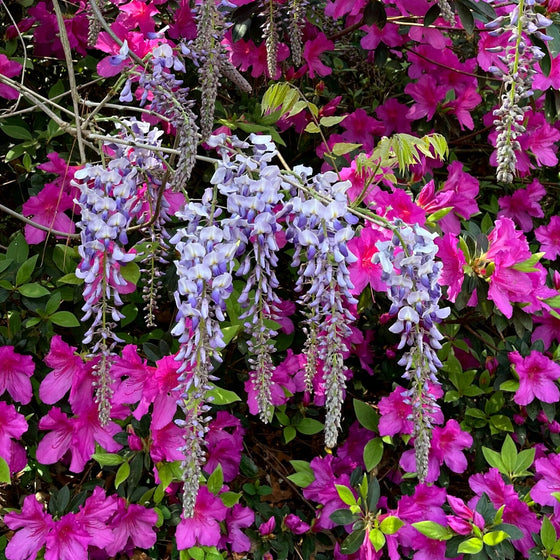
Images Depict Mature Plants
Reblooming Blue Moon Wisteria Vines for Sale Online
Blue Moon Wisteria (Wisteria macrostachya 'Blue Moon') has blueish-purple flower clusters that cascade from a climbing vine. There is no other plant that will bring the same feeling of elegance and enchantment to your garden.
Not only are the blooms beautiful, but they also return up to 3 times in one season (once in the spring and up to 2 more times in the summer)! Blue Moon Wisteria is also hardy to zone 4 so a wider range of gardeners can enjoy their charm.
Sometimes referred to as Kentucky Wisteria, Blue Moon prefers full sun and rich, well-draining soil. This type of Wisteria can grow up to 30 feet so it looks best when guided by a trellis, or up a wall; prune as needed.
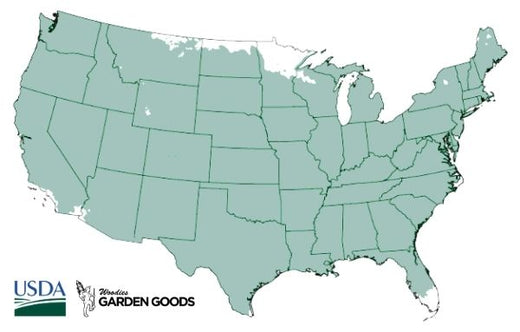
| Hardiness Zone: | 4-9 |
|---|---|
| Mature Height: | 20 to 30 Feet |
| Mature Width: | 3 to 4 Feet |
| Classification: | Broad leaved native deciduous vine |
| Sunlight: | Full sun to part sun |
| Habit: | Upright, climbing plant |
| Flower Color: | Blueish-purple |
| Foliage: | Medium green turning yellow in the fall |
| Pruning Season: | Late winter to early spring, promotes increased branching and more flowers |
| Soil Condition: | Any well drained soil |
| Water Requirements: | Water well until established |
| Uses: | Extremely attractive when used as a vine on trellises. Provides nectar sources for pollinators. |
How to Care for Blue Moon Wisteria
Before you buy a Blue Moon Wisteria Vine, make sure to read about the recommended care instructions to keep this plant healthy and thriving.
How do I plant an Blue Moon Wisteria Vine?
We suggest when planting your newly purchased Blue Moon Wisteria Vine that you dig a hole twice as wide as the root system but not deeper. Depending on the quality of your existing soil you may need to add a locally sourced compost or topsoil to the back-fill soil. We do not recommend using straight topsoil or compost as a back-fill soil because more times than not these products will retain entirely to much moisture and will cause the root system to rot. Adding compost or topsoil will help the young feeder roots of Blue Moon Wisteria Vine to spread through the loose, nutrient rich soil, much easier than if you used solely the existing soil which more times than not will be hard and compacted. We suggest using bio-tone fertilizer when planting. Bio-tone starter fertilizer is a great starter fertilizer that provides plants with mycorrhizae fungus. It is a naturally occurring beneficial fungus that colonizes on the new growing roots of plants. It creates a barrier between the roots of the plant and fungus and pathogens that can cause root rot. We love this product and use it on all plants we install in our own gardens. Bio-tone is a gardeners best friend and can help guarantee your success.
How do I fertilize Blue Moon Wisteria Vine?
Native vines such as Blue Moon Wisteria Vine grow best if they are fertilized once in the spring and again in early summer. Blue Moon Wisteria favors nutrient rich soil and ample fertilization. Amethyst Falls Wisteria Vine benefits from an fertilizer which can help raise the acid level of the soil such as Holly-Tone by Espoma. When selecting a fertilizer for your Amethyst Falls Wisteria, if soil Ph is not an issue a simple balanced fertilizer can be used such as Tree-tone. Either chemical fertilizers or organic matter can be used successfully. Since an organic method of applying manure and/or compost around the roots, produces excellent results and also improves the condition of the soil, this would be an excellent first line of attack. Organic additions to the soil can also be combined with a shot of chemical fertilizer for maximum effect. If chemical fertilizers are used on your Blue Moon Wisteria, applying a slow-release, balanced fertilizer once a year is probably the simplest solution. There are many slow-release fertilizers on the market.
How do I water Blue Moon Wisteria Vine?
After planting the Blue Moon Wisteria Vine, give it a slow deep watering. Most of the water you put on the plant at first will run away from the plant until the soil is soaked. A general rule of thumb is to count to 5 for every one gallon of pot size. For example a one gallon pot would be watered until you count to 5 a three gallon pot would be 15 and so on. Check the plant daily for the first week or so and then every other day there after. Water using the counting method for the first few weeks. Gator bag Jr. can be used to help aid in this process and also provide plants with a good soaking due to the slow release of the water into the root-zone of the plant.
How do I mulch Blue Moon Wisteria Vine?
We highly recommend that you mulch your Blue Moon Wisteria Vine with either a ground hardwood mulch or a ground cypress mulch depending on your local availability. Any type of mulch will do but cypress or hardwood mulch will be of a higher quality and provide better nutrition overall as they breakdown. Mulching helps to keep weeds away which will compete with your new investment for water and nutrients. A 2 to 3 inch layer of mulch is sufficient but remember to take care not to cover any part of the stem of the plant with mulch. Its better to leave a one inch gap of space between the mulch and the stem or trunk of the plant.

